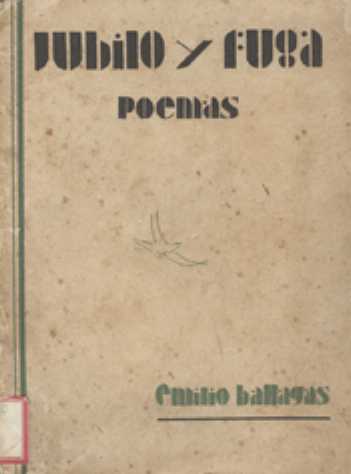4.1.1.17.1 First poetic forays of Emilio Ballagas (1908 – 1954)

Emilio Ballagas’s first poems date from 1925, entitled “De hielo” (Of Ice), and in the same year he wrote the poem “Despedida” (Farewell), which he dedicated to his great-aunt Clara Varela, and which is associated with the twilight of life. At the end of that decade, several avant-garde poems appeared in the Camagüey magazine “Antenas,” although his foray into this movement was truly superficial, before he soon moved toward purism and continued his poetic evolution under other signs.
His first collection of poems was “Jubilee and Escape,” from 1931, in which he displays the joy of purism, devoid of intellectualization and focused on the enjoyment of the word per se, free from spatial and temporal contingencies. In a way, he abandons his circumstances to reach a higher realm, where only language, sensation, and spirit exist.
Ballagas’s joyful candor also stands out, his fruitful apprehension of nature even without the tugs of the flesh, a spirituality that pleased him greatly and made him feel in communion with himself and with God. The sensorial predominates but is spiritualized, focused above all on the sublime capture of beauty and the eternal sojourn in his ideal chambers.
The purist attitude manifested in these poems implies a deep intimacy with beauty. However, the poet needs to step out of himself, rather than escape, to travel toward reality, toward knowledge and also toward nature and delight in its many gifts for the senses, ultimately expanding into creation, the flesh of the creator’s flesh and one of the paths to access divinity.
Furthermore, Ballagas needed to break the siege of the prevailing morality, to return to paradise, although only an ideal one denied to him not by God but by men; but from his Catholic worldview, all of this was forbidden to him, furthermore prohibited by a religiosity that had monopolized God and from which absolute precepts were dictated.








